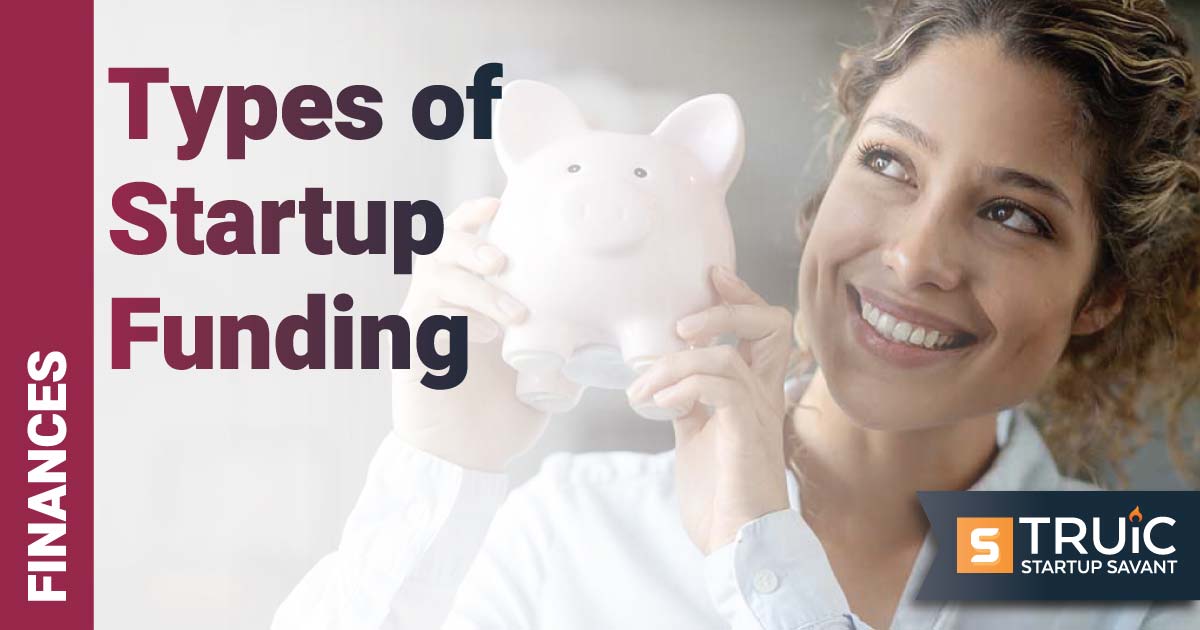What Is Pre-Seed Funding?

Last Updated: By Michaela Dale
During the early stages of the startup lifecycle, pre-seed funding can be a foundational bedrock for startups to move from establishing their minimum viable product (MVP) to setting the stage for their startup's success.
Before you choose to raise pre-seed funding, get the basics of this early-stage funding round down with this guide on what you need to know and how to raise pre-seed funding from angel investors and beyond.
The Basics of Pre-Seed Funding
Pre-seed funding is the earliest stage in the funding cycle of a startup, allowing startup founders to turn their idea into a tangible business. The pre-seed stage comes before a seed round and before any series funding rounds (e.g., Series A, B, C, etc.).
At the pre-seed funding stage, the startup is often in its infancy, sometimes not more than a concept or a basic prototype. The primary focus during this phase is on developing the idea, conducting research, building a prototype or minimal viable product (MVP), and laying the groundwork for the business structure.
Pre-Seed vs. Seed Funding Round
Pre-seed funding is essentially the groundwork phase. It's about proving the feasibility of the idea and setting the stage for future growth and additional funding. Following the pre-seed stage, a startup typically enters the seed stage, where it might have a working prototype and some level of user validation. Seed funding is often larger in amount and involves more formal investment terms, possibly from angel investors or early-stage venture capital firms.
There are several key differences between a pre-seed funding round and a seed funding round, including the:
- Startup stage: A pre-seed round is typically raised when the startup is at the very early stages when it is still being conceptualized or developed. Seed funding, comparatively, is still early stage but is raised when the start is working on a prototype or has some forward momentum.
- Funding purpose: The focus of pre-seed money is on validating the business idea and conducting market research, whereas a seed round is about taking the validated idea and growing it into a viable business.
- Funding amount: Pre-seed rounds are generally smaller than seed rounds, ranging from a few thousand dollars to a few hundred thousand dollars.
- Funding source: Pre-seed investors are commonly the founders’ friends and family, or sometimes angel investors. It may also be taken from the founder's own financial resources. Seed rounds, however, can be acquired from all of these sources, as well as pre-seed VC firms.
- Equity and valuation: It is possible that startups may not have a formal valuation at the pre-seed stage. Investments might be made in exchange for a small equity stake or as convertible notes.
- Level of risk for investors: The pre-seed funding stage is considered a higher risk for investors. Seed-stage investments are also risky but less so than a pre-seed round.
As the startup progresses beyond the seed stage, it enters various rounds of venture capital funding, where larger sums of money are invested, and the focus shifts from proving the concept to scaling the business, expanding market reach, and increasing revenue. Pre-seed funding, therefore, is crucial as it helps a startup transition from an idea to a viable business entity capable of attracting more substantial investments.
How Much Is Pre-Seed Funding?
Pre-seed funding typically involves smaller amounts of capital, usually less than $1 million, with the average pre-seed in the US just above $500,000. The exact amount can vary significantly based on several factors; however, these are the most common:
- Geographical location
- Nature of business and industry
- Founder experience and background
- Stage of product development
- Market size, competition, and market validation
- Strength of business plan and pitch
- Regulatory environment
Each of these factors can influence investor perceptions of risk and opportunity, ultimately affecting the amount of capital a startup can raise during its pre-seed funding round.
When to Raise Pre-Seed Funding
Startups should consider raising pre-seed funding primarily to validate their business idea, develop a minimum viable product (MVP), and lay the foundational elements of their business. This stage is crucial for entrepreneurs who have a business concept but need to assess its viability in the real world. Pre-seed funding enables them to conduct thorough market research, create prototypes, and test their products or services with early users.
It may also be time to build a small core team or bring on additional co-founders, especially by bringing in essential skills that the founders might lack. This initial team is key to developing the product, establishing basic business operations, and setting the stage for future growth.
How to Secure Pre-Seed Funding
Securing pre-seed funding is a critical step for startup founders, and it involves a series of strategic and well-planned actions. Here’s a roadmap outlining these steps:
1. Refine Your Business Idea
Begin by solidifying your business idea. This includes understanding your product or service, the problem it solves, and your target market. Conduct initial market research to validate the need for your solution.
2. Create a Business Plan and Pitch Deck
Develop a comprehensive business plan that outlines your business model, market analysis, financial projections, and long-term vision. A compelling pitch deck is crucial for presenting your idea succinctly and effectively to potential investors. Practice and refine your pitch. It should clearly convey your business idea, the market opportunity, your unique value proposition, and the potential return on investment.
3. Network and Identify Potential Investors
Start networking to connect with potential investors. This includes angel investors, early-stage venture capitalists, and other individuals or entities interested in pre-seed investments. Attend startup events, join entrepreneurial communities, and leverage online platforms.
4. Approach Investors
Start reaching out to potential investors. This can be through direct pitches, introductions from mutual connections, or at pitching events. Be prepared to follow up and provide additional information as needed.
5. Negotiate Terms and Close the Deal
Once an investor shows interest, negotiate the terms of the investment. This includes the valuation of your company, if applicable, the amount of equity you’re willing to give up, and any other conditions of the investment.
6. Legal and Financial Due Diligence
Engage in the due diligence process, where investors will examine your business’s legal and financial aspects. Ensure all your documents, such as incorporation papers, patents, financial statements, and contracts, are in order.
7. Finalize the Investment
Once due diligence is complete and terms are agreed upon, finalize the investment. This usually involves signing a term sheet and legally binding documents.
8. Use Funds Wisely and Plan for the Future
After securing the funding, focus on using the funds effectively to reach the milestones you’ve set. This can include further product development, hiring, and early marketing efforts. Also, start planning for future funding rounds based on the growth and milestones achieved with the pre-seed funding.
Frequently Asked Questions
How much is pre-seed funding usually?
Pre-seed funding rounds are typically under $1 million, with most pre-seed rounds in the United States averaging around $500,000. The amount of pre-seed money a startup can raise depends on several factors, including location, market, founder experience, and more.
How hard is it to get pre-seed funding?
The level of difficulty early-stage companies will experience when they attempt to raise a pre-seed funding round. While many startups are successful in securing their initial pre-seed capital, the ones who are not may find difficulty due to factors such as lack of proven concept, limited track record, high competition, and market conditions.
How long should pre-seed funding last?
Pre-seed funding rounds typically last startups 12 to 18 months.
How much equity do you need to give up in pre-seed?
It is common for a pre-seed investor to take 10%-15% in equity at this funding stage.


